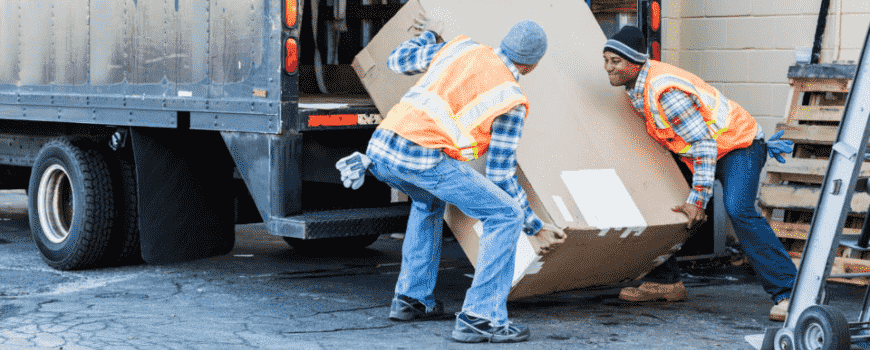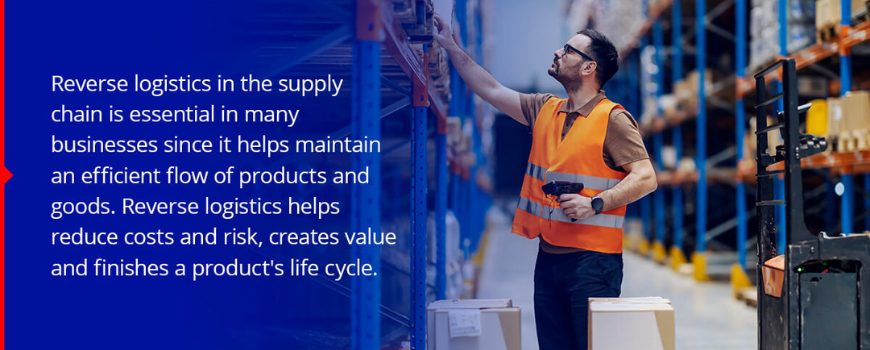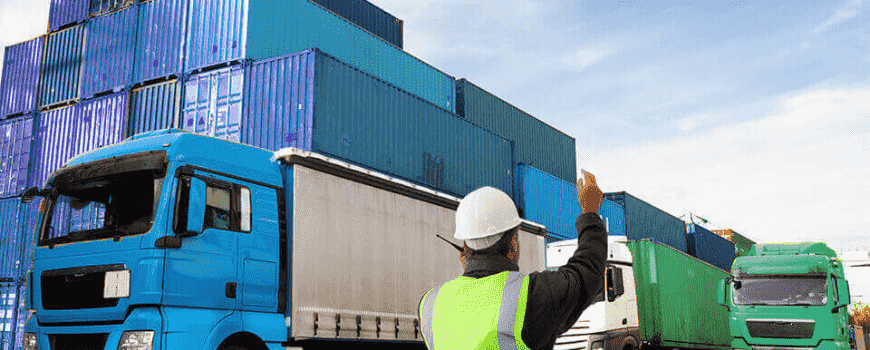The Ultimate Guide to Understanding Reverse Logistics and Why It’s Important
In the business world, the focus often lands on getting products out the door and into customers’ hands. But what happens after purchase? The truth is that the customer journey continues. This is where the concept of reverse logistics comes into play. Whatever, in this blog post, we’ll discuss all about this type of logistics, understand its process, its components, and why it’s important for businesses. So, let’s get started!
What is Reverse Logistics?
Reverse logistics, also known as reverse supply chain, aftermarket logistics, or retrogistics, refers to the process of managing the return of goods from the point of consumption back to the point of origin. While traditional logistics like freight forwarding focuses on moving goods from the manufacturer to the customer, the reverse supply chain deals with the flow of goods in the opposite direction.

This can also include product returns, repairs, recycling, or disposal. However, this type of upstream logisticsplays a crucial role in supply chain management as it ensures the efficient handling of returned products, reducing costs and minimizing waste. Moreover, it involves several key activities such as product collection, transportation, sorting, and disposition. By managing the reverse flow of goods, companies can recover value from returned products and maintain customer satisfaction.
What is the Process of Reverse Logistics?
The reverse logistics process begins when a customer decides to return a product for various reasons, such as dissatisfaction with the product, a shipping error, or a product recall. Once the return is initiated, the product goes through a series of steps to determine its disposition.
The first step in the aftermarket logistics process is product collection. This can be done through various channels such as retail stores, drop-off locations, or mail-in returns. Once the product is collected, it is typically sorted based on its condition and reason for return. This allows companies to identify products that can be repaired, refurbished, or resold, as well as those that need to be disposed of or recycled.

After sorting, the returned products are transported back to the appropriate location, which can be a distribution center, a repair facility, or the original manufacturer. At this stage, companies may choose to repair, refurbish, or remanufacture the returned products, depending on their condition and market demand. However, this can involve replacing defective parts, cleaning and repackaging the product, or even repurposing it for a different use. The final step in reverse fulfillment is the disposition of the returned products. Additionally, this can include reselling the product as refurbished or open-box items, recycling the materials for reuse, or disposing of the product in an environmentally friendly manner. Cold chain logistics may also come into play, particularly if the returned products include perishable items or require temperature-controlled transportation and storage. However, by managing the reverse flow of goods, companies can minimize the financial and environmental impact of product returns.
Components of Reverse Logistics
Reverse logistics in supply chain involves several key components that are essential for its successful implementation. These components include:
- Returns Management: This component is crucial for online retailers like HC Online Store. They must establish clear policies and procedures for customers to return products such as electronic gadgets and accessories. For instance, HC Online Store could offer a user-friendly online portal where customers can initiate return requests and print return labels for shipping the items back.
- Reverse Transportation: This component deals with the movement of returned products from the customer to the appropriate location for disposition. It includes selecting the most cost-effective and efficient transportation modes, such as parcel carriers, freight carriers, or aftermarket logistics providers.
- Product Disposition: It involves determining the fate of the returned products based on their condition and market demand. Besides, it includes activities such as repair, refurbishment, remanufacturing, recycling, or disposal.
- Inventory Management: Additionally, this component focuses on efficiently managing the inventory of returned products. However, it includes tracking and controlling the quantity, location, and condition of returned items to ensure accurate inventory records and prevent stockouts or overstock situations.
- Data Analysis: Lastly, this activity involves analyzing the data collected during the reverse process to identify trends, patterns, and areas for improvement. Furthermore, it helps companies make informed decisions regarding product design, customer service, and supply chain optimization.
By effectively managing these components, companies can optimize their reverse logistics solutions and maximize the value of returned products.
5 R’s of Reverse Logistics
The 5rs of reverse logistics refer to principles or strategies aimed at managing returned products effectively. However, these principles help guide companies in handling returns sustainably and efficiently. The 5 R’s typically include:
| Return | Receiving returned products from customers and retailers. |
| Resell | Putting returned products back into the sales inventory for resell. |
| Repair | Fixing returned products that have defects to make them suitable for resell. |
| Replacement | Provide a new product to customers in exchange for the returned product. |
| Recycle | Disassembling returned products to recover materials that can be reused or recycled. |
These principles help companies extract maximum value from returned items while also promoting sustainability in their operations.
The Importance of Reverse Logistics
Reverse supply chain management is becoming increasingly important in today’s business environment for several reasons:
- Customer satisfaction: A smooth and efficient returns process enhances customer satisfaction. By providing hassle-free returns and resolving issues promptly, companies can build trust and loyalty with their customers.
- Cost savings: Additionally, reverse logistics systems allow companies to recover value from returned products. By repairing, refurbishing, or reselling returned items, companies can reduce the financial impact of product returns and minimize waste.
- Environmental sustainability: Proper disposal and recycling of returned products contribute to environmental sustainability. Aftermarket logistics ensures that products are disposed of in an environmentally friendly manner, reducing the environmental impact of the supply chain.
- Compliance with regulations: Moreover, in industries such as electronics or pharmaceuticals, product recalls are common due to safety or quality concerns. This type of logistics helps companies manage product recalls effectively. Which ensures compliance with regulations and minimizing the impact on customers and the brand’s reputation.
Supply chain optimization: The best reverse logistics companies provide valuable insights into product performance, customer behavior, and supply chain inefficiencies. By analyzing the data collected during this process, companies can identify areas for improvement.
FAQs
What are the 5rs of reverse logistics in supply chain?
The 5rs of reverse supply chain typically include return, resell, repair, replacement, and recycle.
What are reverse logistics services?
Reverse logistics services involve managing product returns, repairs, replacements, refurbishments, and disposals efficiently to optimize value recovery, while ensuring customer satisfaction.
What is the importance of reverse logistics?
Reverse logistics is a critical component of supply chain management. It involves the efficient handling of returned products, ensuring customer satisfaction and cost savings. By implementing best practices for managing returns, companies can optimize their reverse operations and reap the benefits associated with it.
Which are the best reverse logistics examples?
Apple recycling program and Amazon returns management are standout examples of the best reverse logistics practices, showcasing streamlined processes that minimize waste, optimize value recovery, and enhance customer satisfaction.
What are the different types of reverse logistics?
The different types of reverse logistics include product returns management, repair and refurbishment services, remanufacturing processes, disposal and recycling operations, and inventory management techniques.
Conclusion
Reverse logistics plays a vital role in supply chain management. It involves efficiently handling returned products, ensuring customer satisfaction, cost savings, environmental sustainability, and compliance with regulations. However, by implementing best practices for managing returns and product recalls, companies can optimize their forward and reverse logistics operations and reap the benefits associated with it.
By partnering with Super Middle East freight & logistics, companies can access reliable and efficient logistics services to support their supply chain needs. So, embrace the importance of logistics and unlock its potential for your business.


